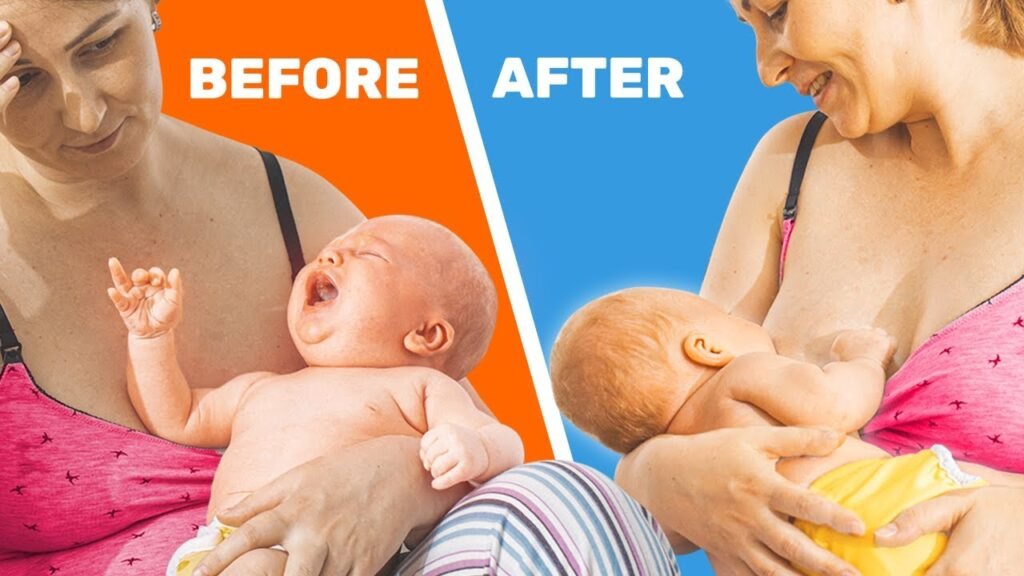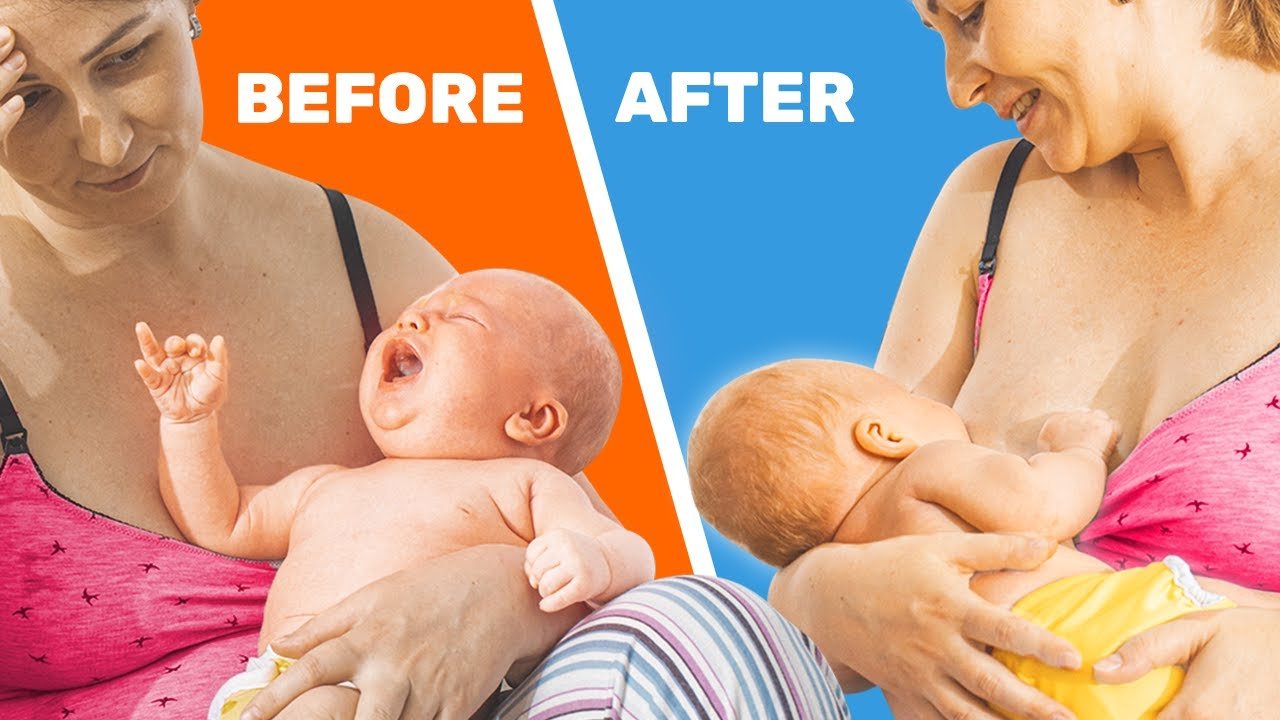Deciding whether or not to breastfeed is an important decision for any new mom that’s considering the best option for them and their baby. If you are in a position where you’re trying to make that decision, there are lots of things you might be considering, and it’s really important that you make your decision based on the best information possible. Unfortunately, there’s still a few commonly held beliefs that exist around breastfeeding that, despite us now knowing aren’t true, continue to persist. And sadly, these often lead to moms being so worried that they don’t start breastfeeding at all, or they suffer through the breastfeeding experience unnecessarily, fearing that they’re actually hurting their baby, as well as having lots of other concerns. So in this video, I’m going to break down some of the most common myths that still exist around breastfeeding. This isn’t about convincing you one way or another. It’s not a pro-breastfeeding video nor is it an anti-breastfeeding video. The goal is to simply present you with information to help you make the best decision for you and your baby.
Let’s start with the common belief that breastfeeding moms get less sleep than those who formula feed. This one is extremely common, but research completed by Doan and her team in 2014 actually showed the complete opposite. In this study, they analyzed the sleep duration and quality of 120 first-time mothers one month after giving birth, and they found that the women who breastfed exclusively actually slept for an average of 30 minutes more at night than women who used formula at night. The idea that breastfeeding leads to less sleep is one I often hear mentioned as a deterrent for new moms when it comes to breastfeeding. So it’s really interesting to see this data actually shows the opposite. Another reason moms skip breastfeeding and go straight to formula is because they’ve heard that if you have small breasts, large breasts, inverted nipples, or flat nipples, you simply cannot breastfeed. Now, it is true that having large breasts or flat or inverted nipples can create some extra challenges when breastfeeding, but not everyone experiences these challenges. Debunking Common Myths about Breastfeeding
Introduction
Breastfeeding is a deeply personal decision for new mothers, and unfortunately, there are harmful beliefs and misconceptions about it that continue to persist. These beliefs can lead to mothers not choosing to breastfeed or experiencing unnecessary pain and worry. In this article, we aim to debunk some of the most common myths surrounding breastfeeding, providing you with information to help you make the best decision for you and your baby.
Myth: Breastfeeding results in less sleep for mothers
One commonly held belief is that breastfeeding mothers get less sleep compared to those who formula feed. However, research has shown the opposite. A study conducted by Doan and her team in 2014 analyzed the sleep duration and quality of 120 first-time mothers one month after giving birth. The study found that women who breastfed exclusively actually slept for an average of 30 minutes more at night than women who used formula. This myth is often cited as a deterrent for new mothers considering breastfeeding, but the data shows that it is unfounded.
To manage sleep while breastfeeding, it can be helpful to establish a consistent bedtime routine, nap when your baby naps, and enlist the help of your partner or support system. Creating a sleep-friendly environment and managing your expectations can also contribute to better sleep quality.
Myth: Breastfeeding is not possible with certain nipple types
Another common myth is that breastfeeding is not possible with small, large, flat, or inverted nipples. While it is true that these nipple types can present some challenges, not everyone experiences them. For instance, women with flat or inverted nipples may find that their nipple comes out on its own once the baby starts breastfeeding, without any issues or challenges. Additionally, with guidance from a speech pathologist specializing in infant feeding or a lactation consultant, there are techniques and positions that can help overcome these challenges and allow successful breastfeeding.
It is important to remember that every mother and baby are unique, and what works for one may not work for another. Seeking support and guidance from healthcare professionals can be instrumental in overcoming any challenges related to nipple types.
Myth: Breast size determines milk production
A pervasive myth surrounding breastfeeding is that breast size determines milk production. However, the size of one’s breasts has nothing to do with the amount of milk that can be produced. Breast size is primarily determined by the amount of fatty tissue, while milk production is governed by the glandular or milk-producing tissues in the breast.
When a baby feeds at the breast, the brain receives a message and signals the release of hormones such as prolactin and oxytocin. Prolactin stimulates milk production, while oxytocin causes the muscles around the milk ducts to push out or release the milk. The more milk a baby consumes, the more milk the body will produce. Breast size or shape does not impact milk supply.

Myth: Most mothers need formula because they don’t produce enough milk
Many mothers worry that they have a low milk supply or that their milk is not sufficient for their baby’s needs. However, this is usually not the case. The majority of mothers produce the right amount of milk for their babies without needing to supplement with formula. Only a small percentage of women, less than 2%, have a rare condition where their breasts don’t produce enough milk due to insufficient glandular tissue.
If a mother has concerns about low milk supply, it is important to seek assistance from a lactation consultant or healthcare provider who can help assess the situation and provide guidance. They can also address any underlying issues that may be contributing to the perception of low milk supply.
Myth: Breastfeeding should be painless
Breastfeeding should not be painful, despite the common myth that it is normal to experience discomfort. While some nipple tenderness or discomfort in the initial days of breastfeeding is common as both the mother and baby adjust, this sensation should fade and resolve within a few minutes of each feed. It is not normal to experience pain between feedings or have cracked, damaged, or bleeding nipples.
If a mother is experiencing pain or discomfort while breastfeeding, it is essential to seek assistance from a pediatric speech pathologist specializing in infant feeding or a lactation consultant. They can assess the latch and positioning, provide guidance on proper techniques and positions, and identify and address any underlying issues causing the pain.
Myth: Babies automatically know how to breastfeed
It is a common misconception that babies naturally know how to breastfeed and that it should be easy for them. While babies are born with sucking and rooting reflexes that can assist with breastfeeding, it is a learned process for both mother and baby.
Finding the best breastfeeding position and latching technique, as well as ensuring a correct latch, may require experimentation and guidance. It is important for mothers to support and guide their babies in breastfeeding, provide patience, and practice together. Seeking assistance from a lactation consultant or healthcare provider can be beneficial in navigating the learning process.
Myth: Breastfeeding is safe and beneficial even when the mother is sick
It is often believed that breastfeeding is safe and beneficial even when the mother is sick. This belief holds true in most cases. Breast milk does not typically transmit illnesses to babies, and nursing while sick can actually provide antibodies and white blood cells through breast milk, reducing the risk of the baby getting the same illness or helping them recover faster.
However, there are certain situations where precautions may be necessary, such as if the mother has a highly contagious illness or is taking medications that are not safe for breastfeeding. It is important for mothers to consult with their healthcare provider to ensure they are taking appropriate measures to protect themselves and their babies.
Myth: Most medications are safe to take while breastfeeding
Another common myth is that most medications are safe to take while breastfeeding. While many medications are compatible with breastfeeding, it is crucial for mothers to consult with their healthcare provider before taking any medication. Some medications can pass into breast milk and may have a negative impact on the baby’s health.
Healthcare providers can provide information on the safety of specific medications during breastfeeding and recommend alternative medications if necessary. It is important to prioritize both the mother’s health and the baby’s well-being when considering medication use during breastfeeding.
Myth: Addressing and preventing biting during breastfeeding
Biting during breastfeeding is a concern that many mothers may have. While it is not uncommon for babies to bite while teething, there are strategies to address and prevent biting. Giving a baby something hard or cold to chew on before a feed can alleviate teething inflammation and pain, reducing the likelihood of biting during breastfeeding. Additionally, if a baby does bite after a feed, addressing their teething pain may help alleviate the behavior.
If biting becomes a persistent issue, seeking guidance from a lactation consultant or healthcare provider can help identify and address any underlying causes and provide strategies for managing and preventing biting.
Conclusion
In conclusion, there are harmful beliefs and myths surrounding breastfeeding that can impact new mothers. It is important to debunk these myths and provide accurate information to help mothers make informed decisions. Breastfeeding does not necessarily result in less sleep for mothers, and it is possible with various nipple types and breast sizes. Most mothers produce enough milk for their babies without needing formula, and breastfeeding should not be painful. Babies do not automatically know how to breastfeed, and it is safe and beneficial to breastfeed while the mother is sick in most cases. While many medications can be taken while breastfeeding, consultation with a healthcare provider is essential. Addressing and preventing biting during breastfeeding is possible with appropriate strategies. Seeking support, guidance, and professional help from lactation consultants or healthcare providers can greatly assist in overcoming challenges and ensuring a successful breastfeeding journey.

